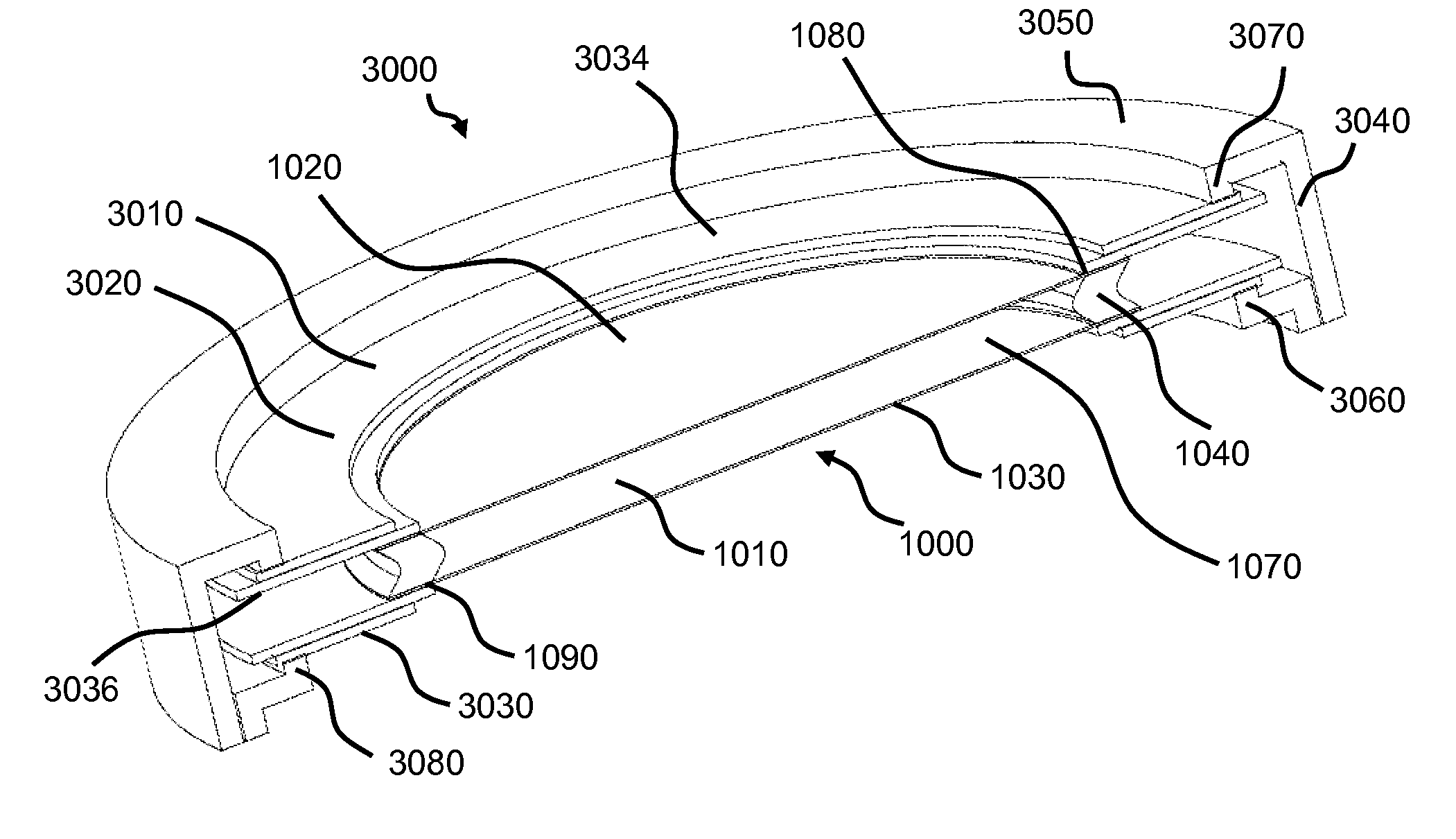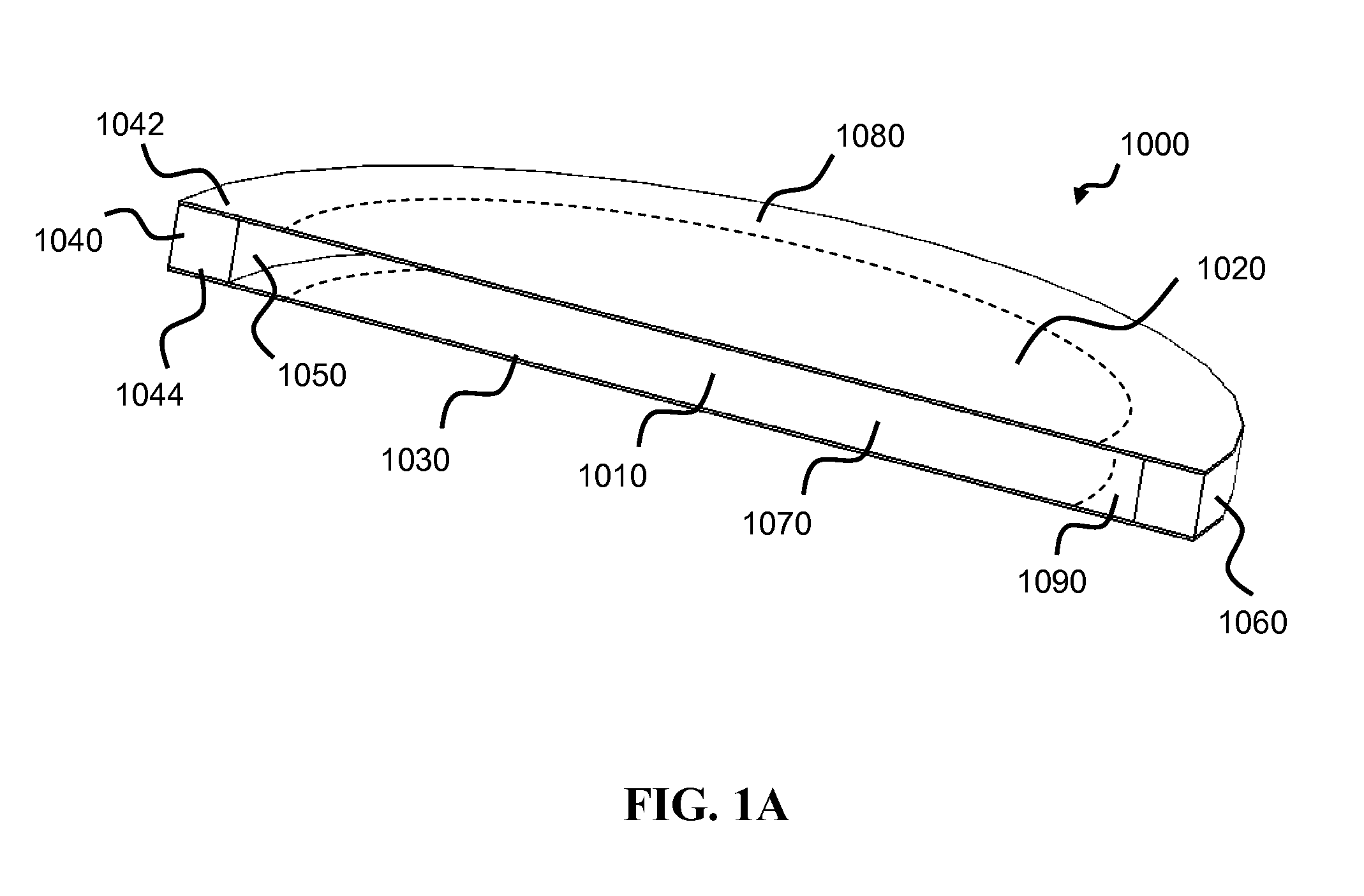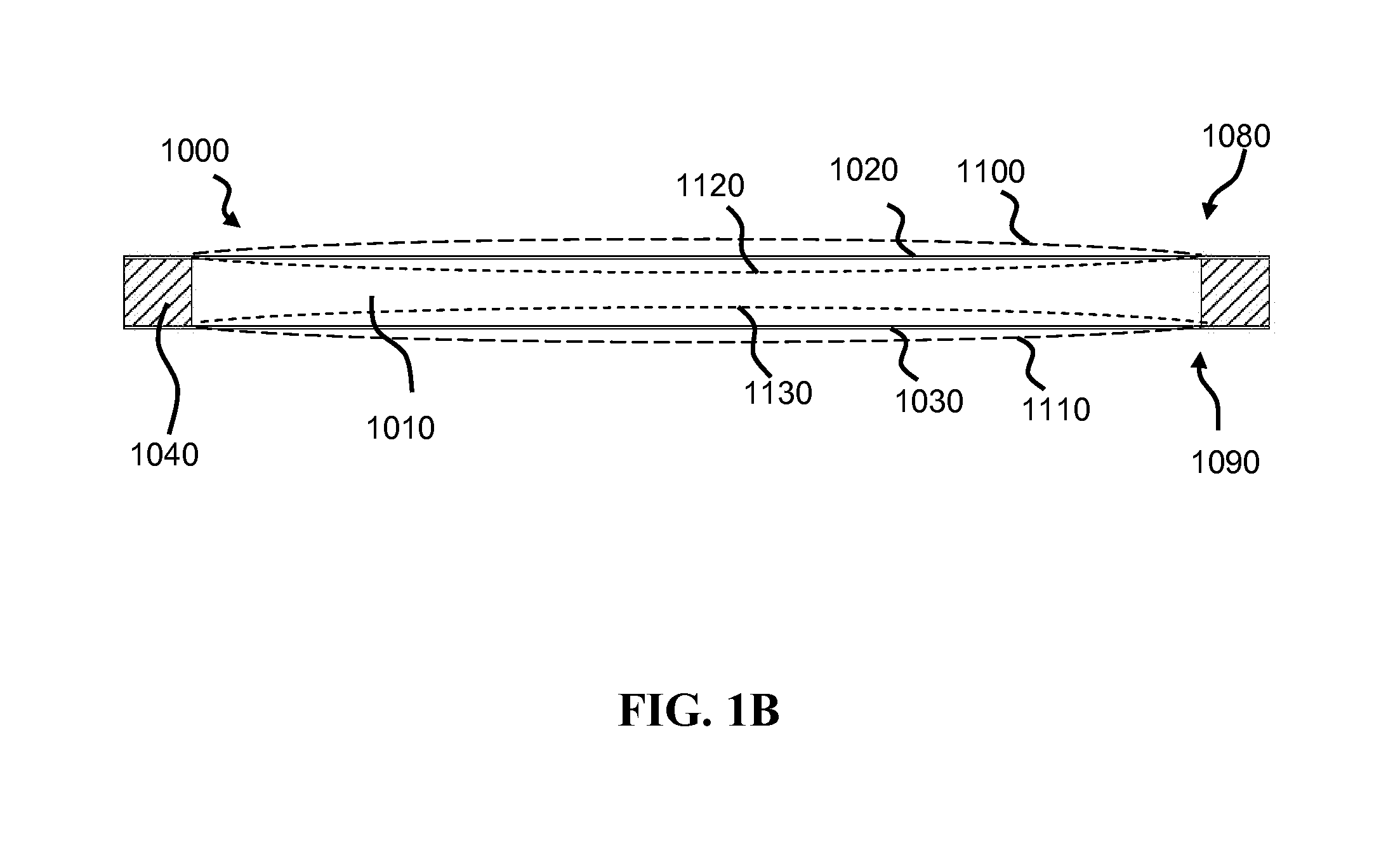Fluidic lens with reduced optical aberration
a technology of fluidic lenses and optical aberration, which is applied in the field of fluidic lens systems, can solve the problems of inconvenient form-factor of the whole system, difficulty in providing sufficient refractive index difference between the two liquids to provide adequate light-ray bending ability, and system disadvantage of remote location of pressurized fluid sources
- Summary
- Abstract
- Description
- Claims
- Application Information
AI Technical Summary
Benefits of technology
Problems solved by technology
Method used
Image
Examples
Embodiment Construction
[0080]FIG. 1A shows a lens member 1000 according to an embodiment of the present invention. A lens chamber 1010 is defined by a first optical surface 1020 and a second optical surface 1030 (also referred to as “optical surfaces 1020, 1030”). Optical surfaces 1020, 1030 may include rigid and / or compliant materials, including elastic membranes, elastic members, elastic thick optical elements and static optical elements. In the present embodiment, optical surfaces 1020, 1030 may include elastic and / or resilient, low elastic modulus, high elastic modulus, low stiffness, or high stiffness membrane material such as elastomer, plastic, semiconductor, crystal, metal, thick glass and thin glass sheets. Further, any of these materials may be pre-tensioned or not pre-tensioned. In the present embodiment, optical surfaces 1020, 1030 may be disposed generally parallel and at a given distance apart (or “separation” or “gap”) from each other when lens member 1000 is in a first state of actuation; ...
PUM
 Login to View More
Login to View More Abstract
Description
Claims
Application Information
 Login to View More
Login to View More - R&D
- Intellectual Property
- Life Sciences
- Materials
- Tech Scout
- Unparalleled Data Quality
- Higher Quality Content
- 60% Fewer Hallucinations
Browse by: Latest US Patents, China's latest patents, Technical Efficacy Thesaurus, Application Domain, Technology Topic, Popular Technical Reports.
© 2025 PatSnap. All rights reserved.Legal|Privacy policy|Modern Slavery Act Transparency Statement|Sitemap|About US| Contact US: help@patsnap.com



